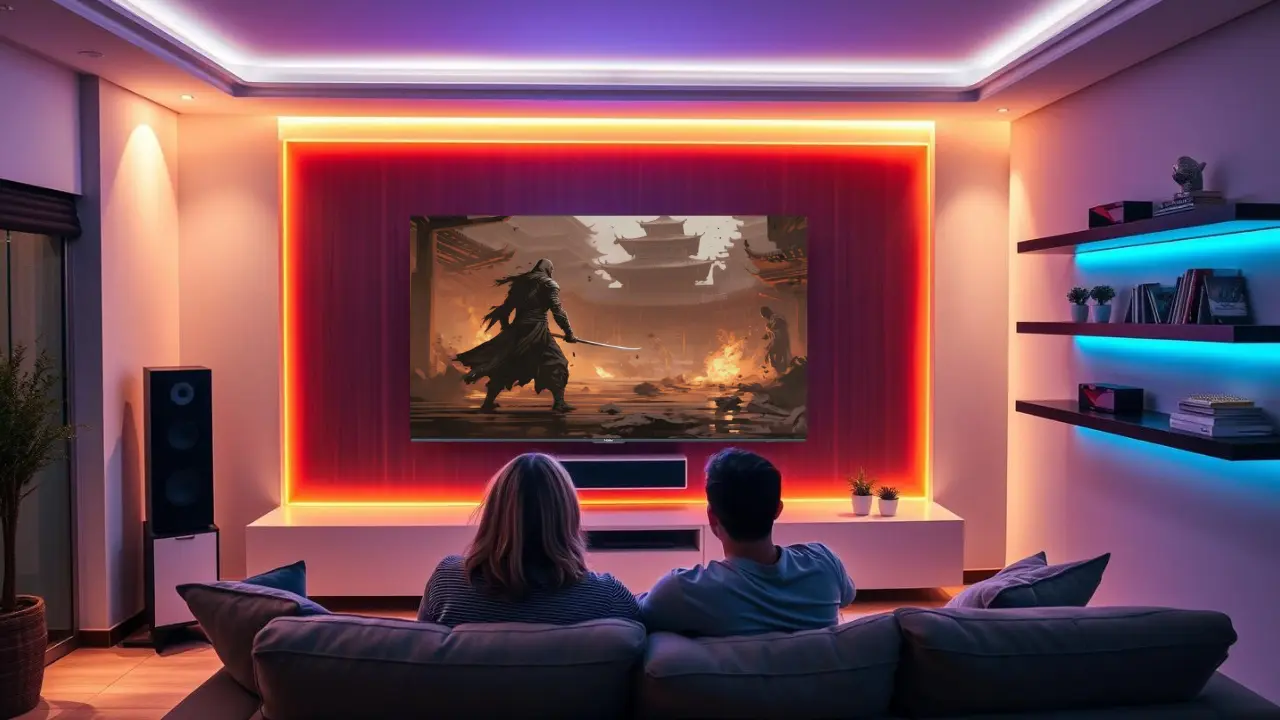Imagine watching a movie while sitting cozily at home and having the best visuals and audio to go with it. Sounds appealing, doesn’t it?
Well, setting up your TV can help achieve that feeling. While most people overlook the importance of TV setup, believing it makes no major difference, the truth is that this assumption is absolutely wrong.
Are you looking to improve your home entertainment system? Professional mounting strategies can completely change the entire experience of how you enjoy TV.
A properly mounted system will be beneficial for most functions. Looking for a more comfortable watching experience and better audio?
Then read this article further, as we will be delving into the proper way of mounting TVs and how it enhances the cinematic experience.
Regardless of whether you enjoy hosting lavish movie nights with the family or are a movie buff, a well-mounted system can drastically improve your TV experience.
So, why wait? Let’s get started.
1. Choosing The Correct Spot
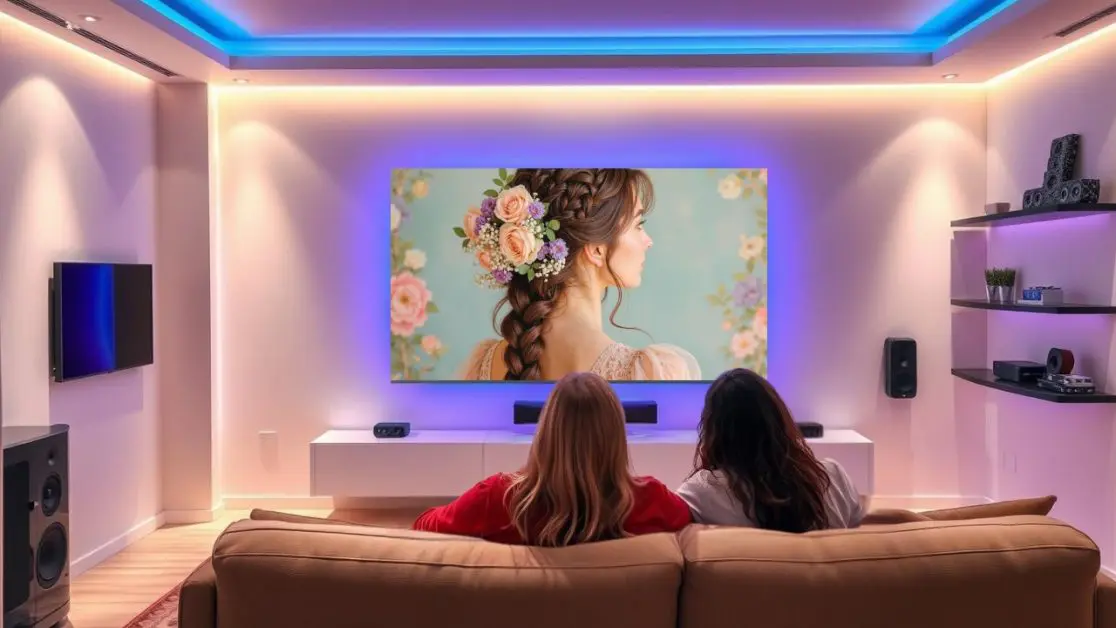
Deciding where the TV will go is the very first step in mounting the TV. This decision can greatly impact how good or bad your television experience will be. Read the following important considerations:
Room Shape
Think about the arrangement of your room. The TV needs to be mounted in a position where everyone facing it has a clear line of sight to the screen. In this case, the best possible position would be the center relative to the main sitting area. If you expect to use the television from multiple vantage points, a swivel mount might work well, as it will enable you to turn the screen depending on your position.
Overall Ergonomics
How high you place the TV on the wall affects comfort. Normally, one should place the TV screen at eye level when sitting down. But that can change based on the proportions of the television and furniture used in the room. A useful tip is that the middle part of the television should frame your eye level when you are resting on a sofa.
Keep Glare to a Minimum
The position of your TV can create glare and reflections that are bound to ruin your TV watching experience. Attempt to mount the TV where sunlight will not hit the screen directly, particularly during peak times. You can also make use of blackout blinds or change the angle of the TV mount in cases where the steps mentioned are not feasible.
2. Choose an Appropriate Mount
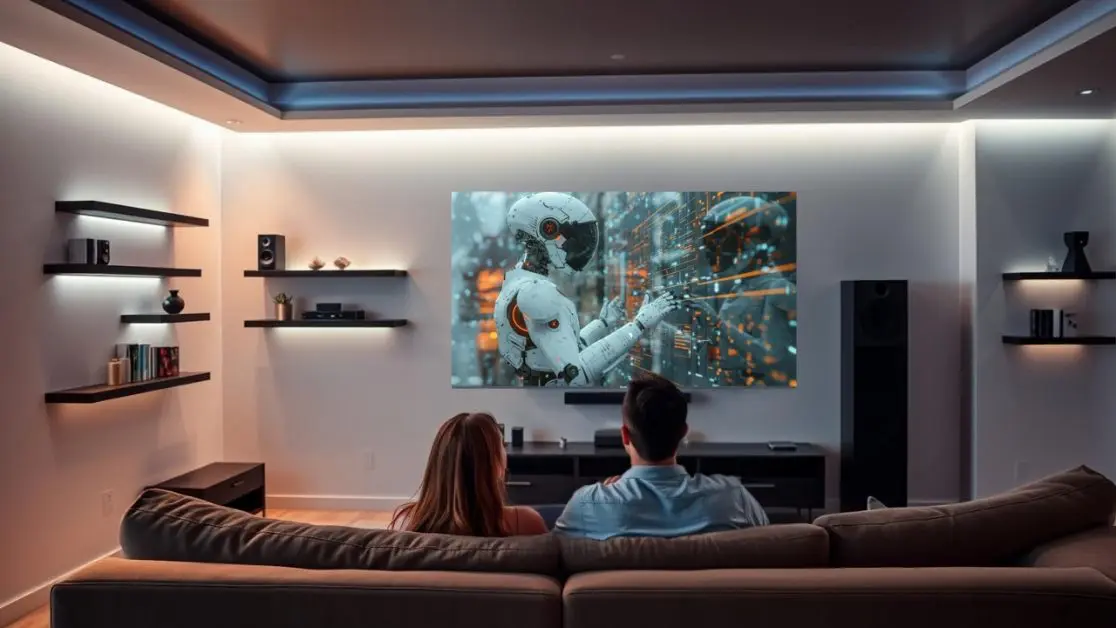
With the potential conflicts cleared out, you can now choose a suitable mount. There are a number of varieties of TV mounts, each differing from one another with regards to advantages. They are as follows:
Fixed Mount
If simplicity is what you are looking for, a fixed mount is what will suit your needs. The TV will be pressed against the wall, rendering a sleek, contemporary appearance. There will be no need to adjust your screen, so this design will be both affordable and ideal.
Tilting Mount
For individuals who want the option to move and adjust the television screen, a tilting mount is the best option. Especially when the TV is placed above eye level, it can be very useful, as it allows for height adjustments too. Other than that, it’s better suited for rooms with higher ceilings as well.
Full-Motion Mount
Also called an articulating mount, a full-motion mount offers the most adjustability. It allows you to move the TV left, right, up, and down. This is ideal for rooms where you may be viewing the TV from different locations or want to change the position for various activities, such as gaming or watching from a dining table.
3. Finding the Right Tools and Hardware
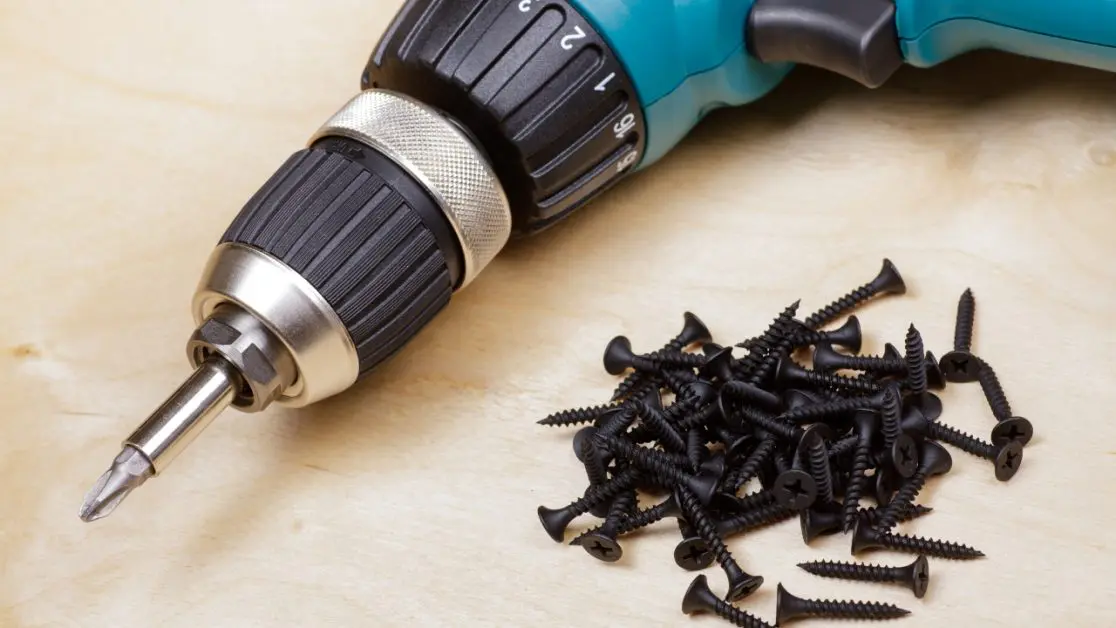
Check off mounting your TV only after making sure you possess each tool. Having the right equipment, especially in terms of precision, guarantees safety and efficiency in a task as complex as this one.
Drill and Screws
A power drill, wall-type screws, and suitable anchors are a must for your TV wall mounting. Anchors also differ based on the wall’s drywall, concrete, or brick. In a TV wall mounting project, using the right screws and anchors is essential in keeping the TV securely fastened.
Stud Finder
When preparing to mount a TV onto the wall, a stud finder makes the task a whole lot easier. A stud finder is used to identify the studs that are positioned behind a wall since they offer support to the mount. It would be unsafe and risky to drywall-mount a TV without penetrating the studs because drywall alone would not be able to support the weight of a mounted TV.
Level
A level is just as important as the listed tools. Aside from supporting the TV during installation, a level will ensure that the television is mounted in a horizontal position. Off-axis misalignment during installation can be cause for concern, so it is best to resolve any possible tweaks to align the TV perfectly horizontal to view the screen smoothly.
4. Preparing the TV and Wall
After selecting the location, tools, and mount, it is finally time to prep the television and the wall.
Measure and Mark
Make sure to first acquire all the needed measurements. Then estimate distances before placing the mounting holes throughout the wall. The described process must involve marking logical positions relative to the radius of the screws and anchors that are meant to go in place on the wall.
Attach Mount to the TV
Generally, you should attach the mounting bracket to the back of your TV before trying to mount it on your wall. Go step-by-step, checking that the bracket is fastened properly. Some TVs might offer screw holes specifically for mounting; consult the user manual.
5. Mount the TV
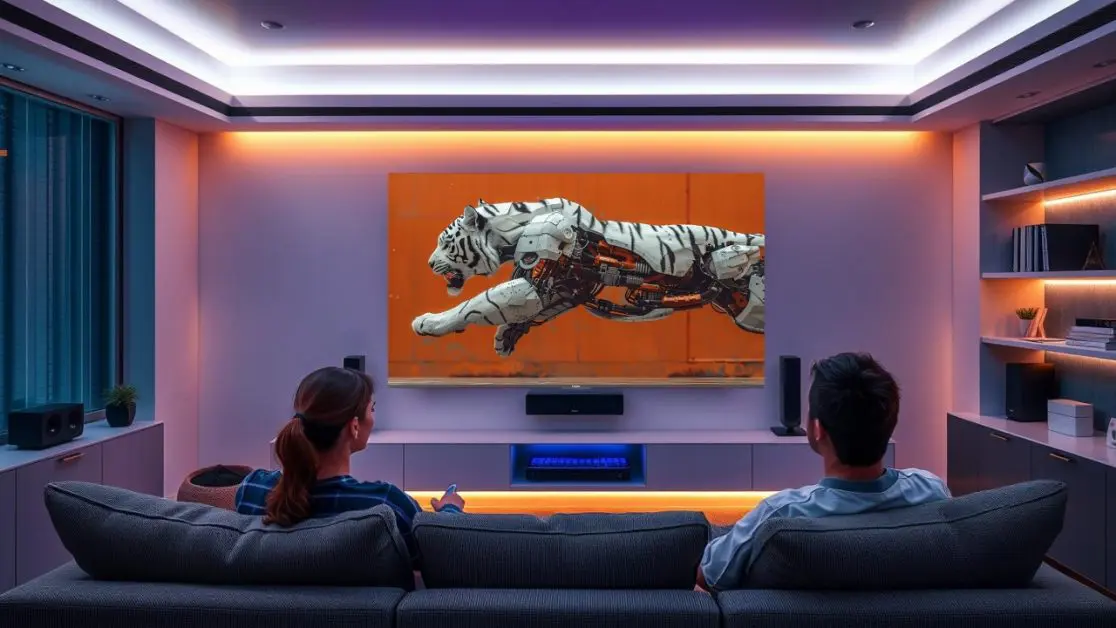
Finally, we reach the truth — mounting the TV. This can be very difficult, especially with larger TVs. It is recommended that you have another person help you at this part so that everything can go smoothly.
Lift and Secure
Once both the TV and wall mount have the mounting bracket, carefully lift the TV into place. Make sure that you properly tighten the TV on the mount according to the instructions given by the manufacturer. Everything from locking screws should be checked to make sure all fasteners are sealed.
Cable Management
Safety isn’t the only reason why excess cables are discouraged. After using the arms and legs to scrub the setup, running the wires neatly around the wall enhances the aesthetics of the room.
6. Viewing Angle Adjustments
For those who’ve chosen full-motion or tilting mounts, remember to take some time to position the TV’s angle for the best possible view. The optimal angle will depend on the elevation as well as the configuration of the room. Regardless, it should always be within a zone that does not require excess neck or eye strain.
7. Sound Setting Adjustments
The experience of cinema at home goes beyond visuals; sound is also a pivotal factor. In case your TV is mounted on the wall, the audio output may suffer because the wall and TV interface restricts space. Here are a few suggested measures for boosting the sound:
Soundbars
With a soundbar, the quality and depth of sound experienced is greatly increased. The placement of the soundbar can either be underneath the TV or right on the wall, which makes it easier to access and saves space while providing clear sound.
Surround Sound Systems
A surround sound system is one of the most important items required for a good viewing experience. While using speakers, take care that they are placed in proper positions in the room. Otherwise, an immersive sound experience will not be achievable.
8. Final Adjustments and Calibration Checks
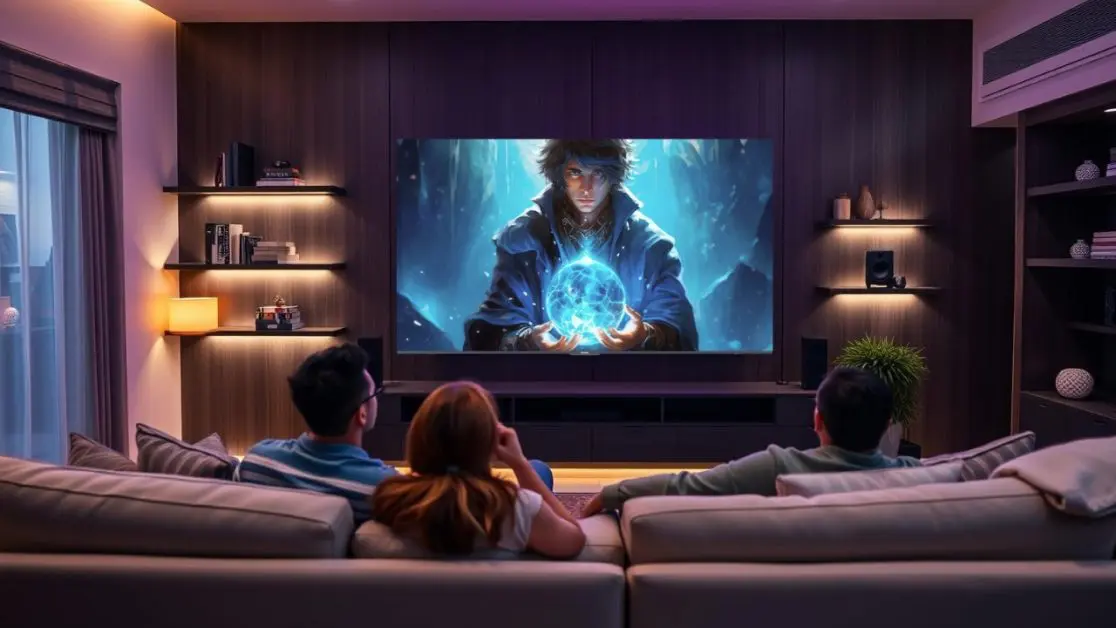
After everything is placed, perform a walkthrough check to make sure everything is adequately tightened and in the right place. Some of the checks should include the TV’s functioning (turning it on, adjusting its angle, checking if picture and sound are synchronized, etc.) to ensure that everything is functioning seamlessly.
You may also want to adjust the picture settings to optimal levels, where color, brightness, and contrast correlate with the room’s lighting. Many televisions these days, including Haier India models, have preset picture modes for different viewing conditions, which makes it a lot easier.
Conclusion
Simply mounting a television on a wall doesn’t guarantee the best viewing experience. For every step in the mounting process, from selecting the ideal position and installing the TV bracket to setting up the sound and image quality for viewing, a homeowner needs to carefully strategize. An expertly positioned television can dramatically elevate family entertainment experiences as if a world-class theater system is personally installed in the living room.
If you want a TV that has smart technology, quality sound, and impressive graphics, check out the TV collection from Haier India. From warmer tones QLEDs to deeper Mini LED blacks and contrast, Haier India covers all your video expectations.
For better cinema at home, check out other Haier India smart TVs to improve your viewing experience!

